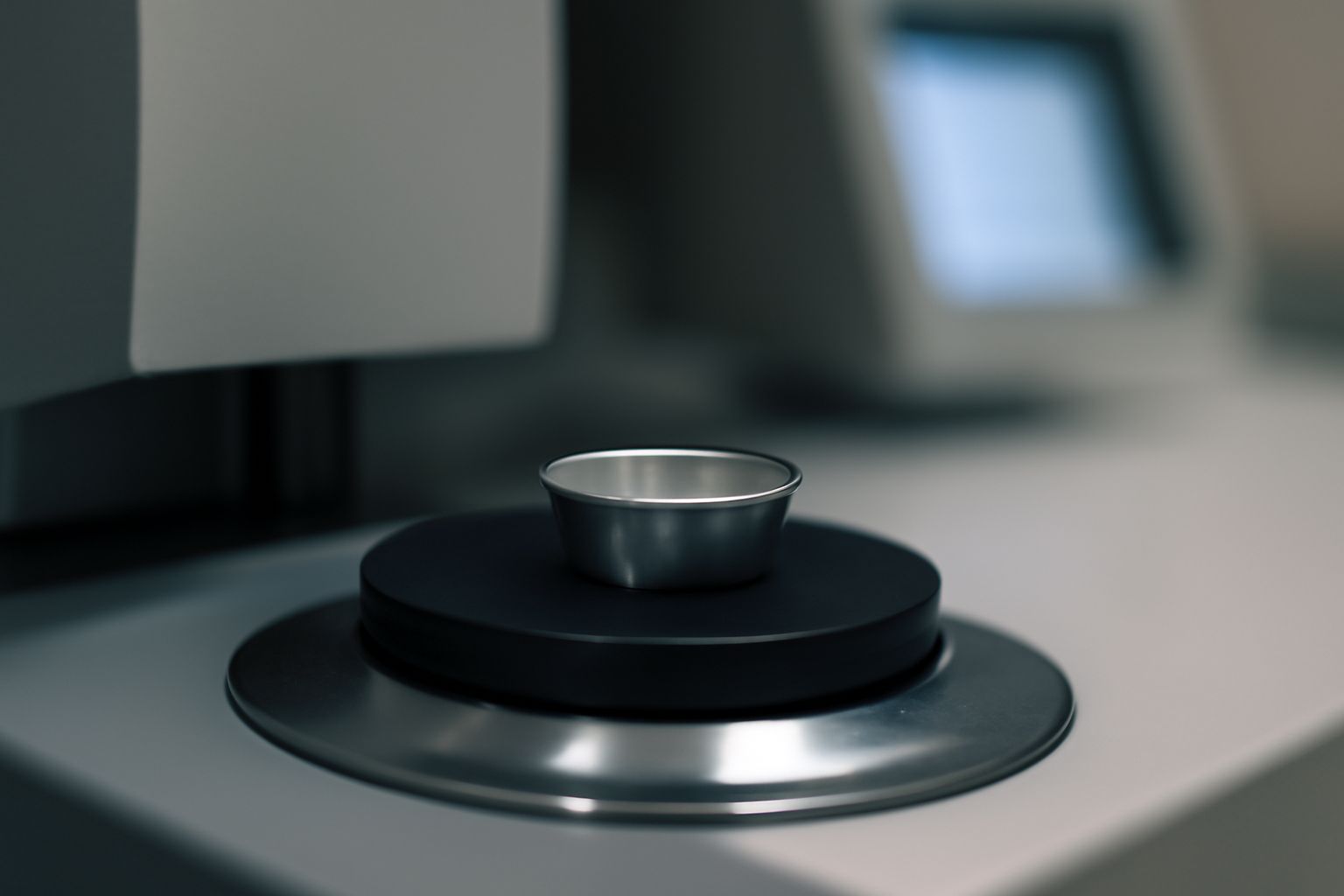Your cart is empty.
shop now
Your cart is empty.
shop now
Unclear technical specs can cause failed DSC or TGA runs. Clear knowledge of testing cup parameters keeps every experiment on track from the start.
Precision thermal analysis crucibles for laboratories must meet strict standards for thermal conductivity, purity, resistance, and structural strength. Understanding these factors helps every lab choose the best solution for its application.

In my daily work, I help teams understand which technical data is most important. A simple review of the right values — and how they change performance — saves both time and resources throughout the testing process. Starting with material type, design, and manufacturer data, anyone can master selection for reliable thermal analysis results.
Poor understanding of crucible parameters leads to drifting baselines and lost samples in the lab. Knowing what really matters means more successful experiments with fewer repeat runs.
The main specifications include thermal conductivity, maximum temperature, purity, chemical resistance, and dimensional accuracy. These metrics match the crucible to its intended purpose in DSC or TGA testing.
| Parameter | Laboratory Importance | Common Range |
|---|---|---|
| Thermal Conductivity | Ensures even heating, stable data | 150 – 230 W/mK (Aluminum) |
| Maximum Temperature | Prevents melting/warping | 600°C (Al) – 1600°C (Pt) |
| Purity | Lowers contamination risk | ≥99.99% (Premium grade) |
| Chemical Resistance | Protects against acid or base attack | Material specific |
| Dimensional Tolerance | Guarantees correct fit in instrument | ±0.01 mm |
Most labs need all relevant parameters documented for quality checks. I always recommend reviewing results of thermal or calorimetric control runs to make sure product choices are correct. References for these parameters are available from supplier and standards organizations.
The wrong material can cause errors or destroy expensive samples. Choosing the correct composition delivers accuracy and safety in every test cycle.
Each crucible material — such as high-purity aluminum, platinum, ceramic, or sapphire — offers different benefits for conductivity, chemical tolerance, and strength.
| Material | Thermal Conductivity | Max Temp (°C) | Best Use Case |
|---|---|---|---|
| High-Purity Aluminum | High | 600 | Standard DSC, TGA for organics |
| Platinum | Moderate | 1600 | Chemical resistance, high-temp analysis |
| Ceramic | Low–Moderate | 1200 | Inorganic or battery research |
| Sapphire | Moderate | 1800 | Optical, sensor, and high-precision tests |
I recommend checking published values and material properties for each candidate material. By matching your analysis method and expected temperature, you prevent sample loss and optimize every result. Supplier sites and peer-reviewed technical articles often include more detailed guidance for very specific applications.
Even with the best materials, poor design causes heat loss and inaccurate data. Every detail in form affects measurement reliability.
Important design factors include wall thickness, shape, sealing, and fit. These influence how accurately temperature and mass changes are detected in real time.
| Design Feature | Effect on Measurement | Selection Tip |
|---|---|---|
| Wall Thickness | Impacts heat flow, response speed | Choose thinner walls for faster response |
| Shape | Controls contact with sensors | Pick the design recommended by your device maker |
| Sealing | Prevents sample loss, supports volatile sample testing | Request sealed pans for sensitive samples |
| Fit | Reduces noise and measurement errors | Use precise tolerances for routine work |
From feedback I have gathered, labs report higher repeatability and lower error rates when using crucibles with factory-fit tolerances. Design of experiments literature highlights the strong influence of geometry and seal quality. Many leading brands publish best-fit guides for every type of DSC and TGA instrument used in advanced laboratories.
Many labs receive detailed datasheets but struggle to spot what matters. Knowing how to read these specs helps teams pick the right crucible every time.
Focus on purity, maximum temperature, volume, and tolerance ratings. Always verify every claim with supporting documents from recognized quality standards groups.
| Specification | What It Means | Common Source |
|---|---|---|
| Material Grade | Purity level and allowed contamination | ASTM, ISO, lab testing |
| Operating Range | Max/min temperature and pressure supported | Manufacturer datasheet |
| Volume | Sample size capacity for each application | User manual, catalog |
| Tolerances | Permitted variation in measurements | QA certificate, third-party reports |
When I help labs set up new methods, I read every spec with their team and get sample documentation from the supplier first. Technical specifications serve as a binding quality promise, protecting against test failures and warranty issues. Use third-party certificates if possible to double-check essential data.
Conclusion
Mastering technical parameters and specs gives every lab team better sample analysis, stronger decisions, and results they can trust in every project.